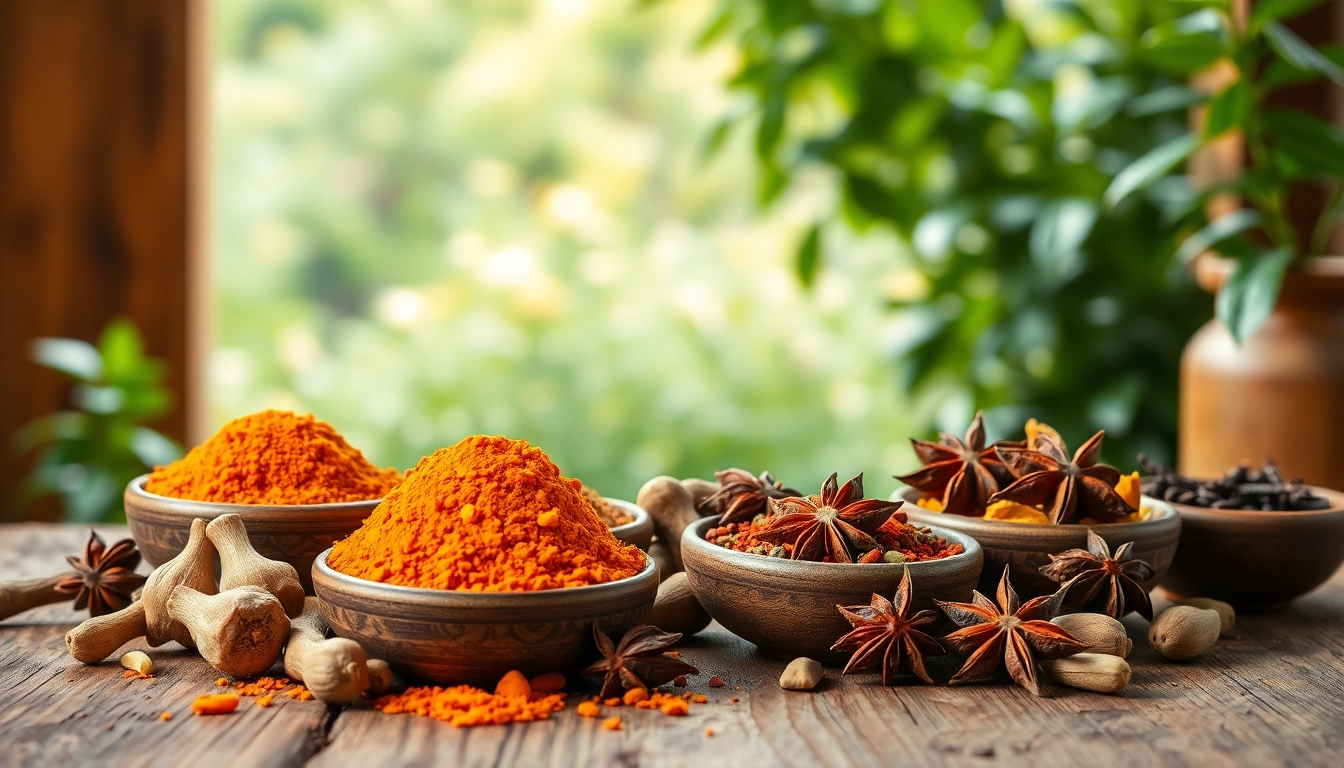
Unlocking the Health Benefits and Culinary Uses of Oriental Spices
The World of Oriental Spices
Oriental spices have captivated chefs, herbalists, and culinary enthusiasts around the world for centuries. Renowned for their vibrant flavors and diverse applications in both traditional and modern cooking, oriental spices encompass a range of ingredients that embody the rich cultural tapestry of their regions of origin. From the fiery kick of chili to the aromatic warmth of cinnamon, these spices serve not only as seasoning but also as a vital component of health and wellness.
Origins and Varieties of Oriental Spices
The origins of oriental spices can be traced back thousands of years to various regions across Asia, including India, China, Japan, and Southeast Asia. The Silk Road facilitated the exchange of these flavor-packed treasures, leading to a blossoming trade that introduced abundant varieties to different cultures. Today, spices such as cardamom, star anise, turmeric, and cumin are celebrated not just for their distinct flavors but also for their historical significance.
Among the most notable oriental spices are:
- Cardamom: Often referred to as the “queen of spices,” cardamom is cherished in both sweet and savory dishes spanning from chai tea to savory curry.
- Turmeric: Known for its vibrant golden hue, turmeric is a staple in many curries and is lauded for its anti-inflammatory properties.
- Cinnamon: With a warm, sweet flavor, cinnamon is utilized in an array of desserts and beverages across cultures.
- Cumin: This earthy spice complements dishes globally, from Indian curries to Mexican salsas.
- Star Anise: Known for its distinct star shape and licorice flavor, this spice features prominently in Chinese and Vietnamese cuisines.
Cultural Significance and Culinary Traditions
Oriental spices are deeply woven into the fabric of cultural identity and culinary heritage. Each spice tells a story, reflecting the agriculture, climate, and traditions of the regions they come from. For instance, in India, spices form an integral part of Ayurveda, not only enhancing flavors but supporting holistic healing practices.
In Middle Eastern cuisine, spices are used extensively in spice blends such as za’atar and baharat, each offering a unique taste narrative. Similarly, in Chinese cuisine, spices like five-spice powder are central to achieving the harmony of flavors that Chinese dishes are renowned for.
The culinary traditions surrounding the use of these spices vary widely; for example, the ritualistic preparation of spices for specific religious ceremonies reflects their significance beyond mere sustenance. This blend of history, culture, and food continues to influence modern culinary practices.
The Role of Oriental Spices in Modern Cuisine
In contemporary gastronomy, oriental spices are experiencing a renaissance. Chefs and home cooks alike are increasingly experimenting with these ingredients to create fusion cuisines that honor tradition while embracing innovation. Gourmet dishes often showcase spices in unconventional pairings, such as cardamom-infused whipped cream or turmeric-based sauces that elevate traditional recipes.
Moreover, the growing interest in plant-based diets has led to a newfound appreciation for spices as a means of enhancing flavor, making vegetables and grains more exciting and palatable. The versatility of these spices allows them to seamlessly adapt to various cooking techniques and cuisines, bridging gaps between cultures and creating new culinary experiences.
Health Benefits of Oriental Spices
The nutritional and medicinal properties of oriental spices have garnered significant attention in recent years, supported by a growing body of scientific research. These spices not only enhance the flavor of food but also contribute to overall health and well-being.
Anti-Inflammatory Properties of Common Spices
Many oriental spices are recognized for their anti-inflammatory benefits. Turmeric, powered by its active compound curcumin, is particularly well-studied for its potential to reduce inflammation in the body. This property makes it a popular choice for individuals suffering from chronic conditions such as arthritis and diabetes.
Similarly, ginger is another powerhouse known for combating inflammation. Research shows that its anti-inflammatory properties can help alleviate muscle soreness and enhance recovery after physical activity. Incorporating these spices regularly into your diet can serve as a flavorful method to promote health and reduce inflammation.
Spices That Promote Digestive Health
Digestive health is significantly influenced by the foods we consume, and oriental spices play a crucial role in promoting gut health. For instance, cumin is known for its ability to stimulate digestion and improve gut microbial diversity. Its warm flavor pairs beautifully with savory dishes, offering both taste and health benefits.
Likewise, cardamom aids in digestion by alleviating bloating and other gastrointestinal discomforts. By adding cardamom to beverages or savory dishes, individuals can enjoy its digestive benefits while enhancing flavor.
Antioxidant Benefits Explored
Another area where oriental spices shine is in their antioxidant properties. Spices such as cinnamon and clove contain high levels of antioxidants, which help combat oxidative stress and may reduce the risk of chronic diseases. Incorporating these spices into daily meals can provide restorative effects that support the body’s defense mechanisms against free radicals.
Research suggests that the presence of antioxidants in the diet may improve cardiovascular health and even boost overall immunity, making these spices essential components of a health-conscious diet.
How to Incorporate Oriental Spices into Your Diet
Integrating oriental spices into your daily meals need not be daunting; with a few simple strategies, you can easily enhance your cooking and enjoy the myriad benefits these spices have to offer.
Simple Recipes Featuring Oriental Spices
Starting with easy recipes is a great way to familiarize yourself with the flavors and techniques. Here are three simple recipes that highlight the use of oriental spices:
- Turmeric Rice: Sauté 1 onion and garlic in olive oil, add 1 cup of rice, 1 teaspoon of turmeric, and 2 cups of vegetable broth. Cook according to rice instructions for a flavorful side dish.
- Cumin-Spiced Roasted Vegetables: Toss your favorite vegetables in olive oil, salt, pepper, and 1 tablespoon of cumin. Roast at 400°F (200°C) for 25-30 minutes until golden brown and tender.
- Spiced Chia Pudding: Mix chia seeds with coconut milk, sweeten to taste, and add a dash of cardamom. Let it sit overnight for a delicious breakfast or snack.
Cooking Techniques for Maximum Flavor
Understanding the proper cooking techniques can significantly enhance the flavor of oriental spices. Toasting spices in a dry pan before adding them to dishes can amplify their flavors, making them more aromatic and flavorful. Additionally, pairing spices with complementary ingredients—such as combining cumin with lamb or cardamom with coconut—further accentuates their profiles.
Pairing Oriental Spices with Other Ingredients
Creating harmonious flavor combinations is key to successful cooking. Keep in mind the natural affinities between oriental spices and various food items. For example, pairing cinnamon with apples and ginger with carrots can create dishes that sing with flavor. Experimenting with different pairings allows individuals to discover unique flavor profiles that may enhance their culinary repertoire.
Challenges and Misconceptions about Oriental Spices
Despite the numerous benefits and uses of oriental spices, several challenges and misconceptions can hinder their incorporation into daily diets. Addressing these issues is essential for promoting better understanding and utilization of these flavorful ingredients.
Addressing Common Spice Myths
Common myths surrounding spices can lead to hesitancy in their use. One of the prevalent misconceptions is that spices are only suitable for specific cuisines. In reality, the versatility of these spices allows them to enhance a broad range of dishes, from salads to desserts. Overcoming these myths can empower individuals to explore new culinary horizons and embrace spice in their cooking.
Navigating Allergies and Sensitivities
Allergies and sensitivities to certain spices, while rare, can pose challenges. It’s essential to be aware of personal dietary restrictions and to read labels carefully when purchasing pre-packaged spice blends. When experimenting with new spices, introduce them gradually to assess any potential reactions. Finding substitutes is also possible—for example, using cumin instead of paprika or turmeric for flavor without allergic concerns.
Finding Authentic Sources for Spices
Quality matters when it comes to spices. Sourcing authentic oriental spices can be challenging, especially in regions where specialty markets are limited. It’s advisable to seek out reputable suppliers or local markets that focus on imported goods. Freshness of spices greatly affects flavor and potency, so choosing high-quality sources can transform your cooking experience.
The Future of Oriental Spices in Global Cuisine
The landscape of global cuisine is continually evolving, and the role of oriental spices is poised to expand even further. Trends indicate a rising interest in flavor innovation, led by adventurous chefs and food enthusiasts eager to embrace the global spice palette.
Emerging Trends in the Spice Market
The spice market is witnessing a shift toward sustainability, with consumers increasingly seeking ethically sourced and organic options. As awareness of environmental concerns grows, spice producers are adapting by implementing sustainable farming practices, which is also reflected in the quality of the spices produced.
Furthermore, the fusion of traditional spice blends with contemporary cuisine can lead to creative culinary experiences that appeal to a diverse audience. This trend of culinary diversity is allowing for exciting new dishes that meld flavors from different cultures.
Innovative Uses in Restaurants and Home Cooking
Restaurants are beginning to embrace oriental spices in unexpected ways, incorporating them into modern dishes while showcasing their heritage. For instance, acclaimed chefs are experimenting by adding a dash of star anise to chocolate desserts or incorporating turmeric into cocktails, creating an innovative dining experience that surprises patrons.
At home, adventurous home cooks can replicate these innovations by seeking out and integrating lesser-known oriental spices into familiar recipes, elevating their culinary creations.
Impact on Health Food Movements
As health food trends continue to gain traction, the spotlight is being cast on the functional benefits of oriental spices. Integrating these spices into wellness-focused diets, such as keto or plant-based, can enhance flavor while delivering health benefits.
Culinary professionals and nutritionists are increasingly recommending spices for their medicinal properties, contributing to a more holistic approach to diet and nutrition. The future of oriental spices appears bright, promising not only delightful flavors but also valuable health benefits for generations to come.
